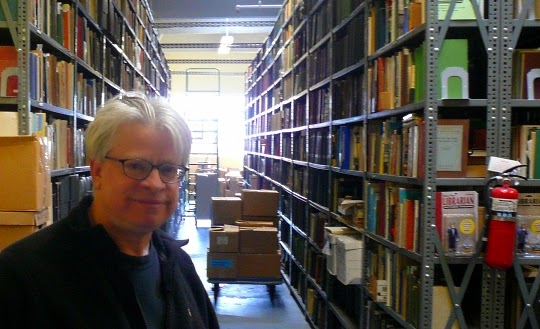My picks (that I've seen):
 |
| Petter Ringbom Dec. 5 at Bear Tooth |
and Petter Ringbom (who is here in Anchorage for the festival) did this as a one person film crew - which you wouldn't know. But when I talked to him after the film, he said he thought this helped him gain the trust of the artists he filmed, had a painting vandalized when the ruling party's lawsuit to have it taken down was unsuccessful. A photographer had her hard drives, with all her work, stolen. Interesting characters and their stories are revealed well. 1pm Alaska Experience Large

Rocks In My Pockets - This is a full length animated feature. Word I'm getting is that the programmers and juries were split on this, some loving it and some hating it. I'm on the loving it side. The Latvian born American film maker, tells her family history with depression and suicide, which takes you through the history of Latvia in the last century as well. It's very droll and she talks about things individuals and their families normally want to hide with straightforward images (they are simple in one sense but not really - each frame is a piece of art you could put on your wall). I can understand if you like traditionally told stories this will not be your thing. If you like original films that have a look and feel you probably have never seen before and are full of serious and honest content (and if you don't, why spend time at a film festival?) then this is a must see film. 5pm Alaska Experience Large
Film Archival Viewing and Talking at The Museum
 |
| Rick Prelinger Image from Spots Unknown |
 |
| Richard Gray director of Lookalike |
The Lookalike - I saw this last night against my better judgment, but it was well made and
kept me watching the whole way through. This is a typical Hollywood action murder movie with a good dose of violence, drugs, and sex. The musical score, when I noticed (and mostly you shouldn't), was good. But I'm just not into movies that use women as sex objects and for target practice. But if you like that sort of thing, it's well done. The film maker is here. And he just finished shooting a film in Seward, that I'm guessing we'll see at the festival next year. 2pm Alaska Experience Small
Listening - I saw the first 45 minutes or so of this yesterday and plan to go back for the rest tonight. Two college plus another, develop brain reading technology. Based on the opening scene, it doesn't go well. This is a first feature for film maker Khalil Sullins, who is here in Anchorage. I'm putting up a short post with video of him later today, so look for it. 8pm Bear Tooth
Global Village Short Narrative Program - I'm looking forward to this because I've been scoping out the short narratives in competition. This program has four of them. Based on what I saw in yesterday's short narrative program, they're going to be as good as my expectations. I did talk to one of the film makers via Skype last week and you can see that here. This is high on my todo list. Here's an overview I posted of all the short narratives in competition - by program. You can get more details of each film there. 1pm Alaska Experience Theater Large
Alaska films - As you can see on the schedule, there are a bunch of Made in Alaska films to see as well. This is a chance to see what Alaskan film makers are doing, and I think you'll be surprised by the quality of many. Check the grid above of times and places.
Particularly look at the 11 am program which is the first program of the day.
The Empty Chair (11am at Alaska Experience Theater) looks worth seeing. Here's the description
 |
| Dec. 5 at AK Exp Theater |
Global Village Short Narrative Program - I'm looking forward to this because I've been scoping out the short narratives in competition. This program has four of them. Based on what I saw in yesterday's short narrative program, they're going to be as good as my expectations. I did talk to one of the film makers via Skype last week and you can see that here. This is high on my todo list. Here's an overview I posted of all the short narratives in competition - by program. You can get more details of each film there. 1pm Alaska Experience Theater Large
Alaska films - As you can see on the schedule, there are a bunch of Made in Alaska films to see as well. This is a chance to see what Alaskan film makers are doing, and I think you'll be surprised by the quality of many. Check the grid above of times and places.
Particularly look at the 11 am program which is the first program of the day.
The Empty Chair (11am at Alaska Experience Theater) looks worth seeing. Here's the description
In 1942 an Empty Chair was set aside for the Juneau born Japanese American valedictorian of the Juneau High School. The Empty Chair is a unique story about how Japanese Americans from Juneau Alaska were sent to prison camps during WWII and how the community stood in quiet defiance against the immoral internment of American citizens.The director, Ed Chaney, did a movie that followed a couple who walked, skied, and kayaked across Alaska. You can see him talking about that film here.
















